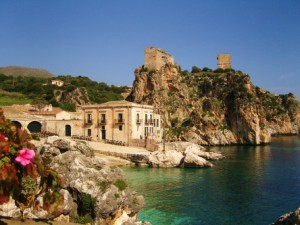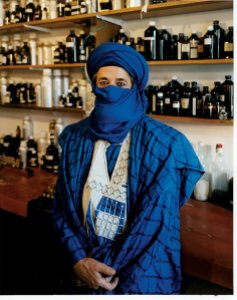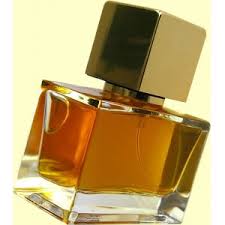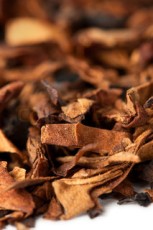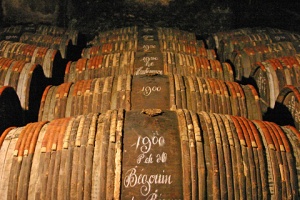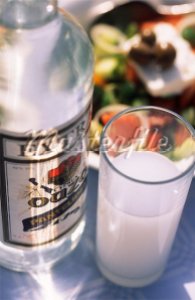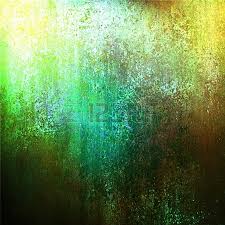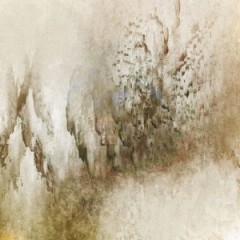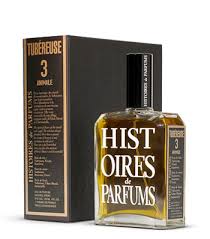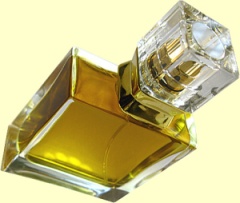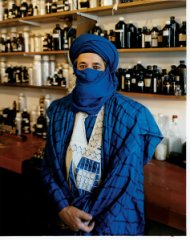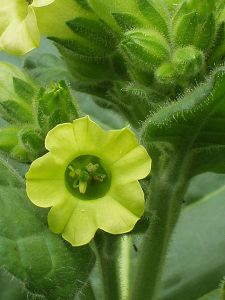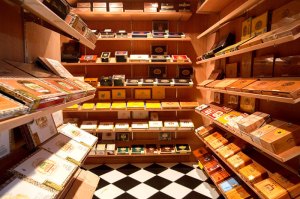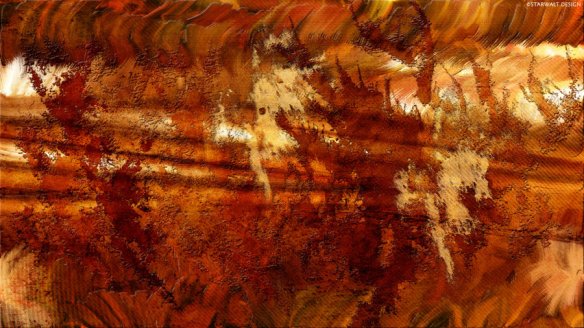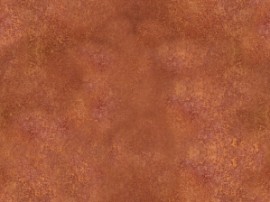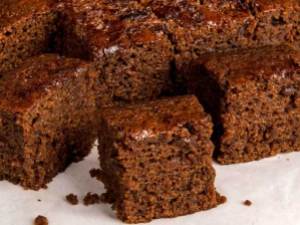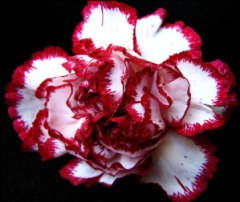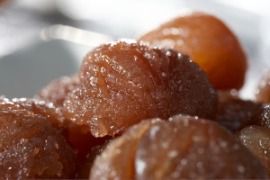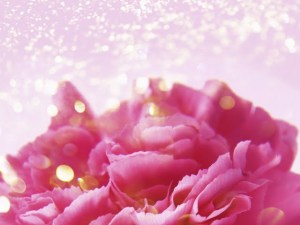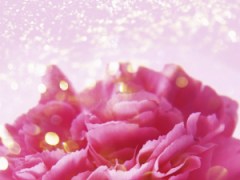The sun-bleached, craggy island of Sicily holds a charm and beauty that is far more rugged than many of its Mediterranean compatriots, but it’s lovely. The capital, Palermo, is nestled in a bay at the foot of Mount Pellegrino, and retains faint traces of its old grandeur at the height of the Arabic domination of the 9th and 11th centuries. Cafés line the Via Principe di Belmonte, filled with Italians enjoying their particularly relaxed form of Mediterranean joie de vivre. On a hill overlooking the city, there is the majesty and grandeur of the Norman cathedral, the Duomo di Monreale, with its towering ceiling, opulent decor, and famous Byzantine-era mosaics.
It’s all very far away from Don Corleone, “capo di tutti capo,” or the Godfather of the famous films. Yet, what else does one think when one comes across a perfume called Palermo Don Corleone (hereinafter just “Don Corleone“)? For someone like myself, a film and television addict, the mental association was instantly and automatically to Godfather III, Michael Corleone’s trip to Palermo, and Don Tommasino’s Sicilian villa. (Not to mention the unfortunate issue of Sofia Coppola ruining a perfectly good film.) I absolutely love the Godfather films (minus that last one that we really should forget about), but I wasn’t sure what to expect from a fragrance actually called by that name — never mind one that involved tuberose and vanilla. Talk about a contradiction! But, honestly, for someone like myself who loves both the Godfather and tuberose, how could I possibly resist?
I should have known better than to expect a straight-forward tuberose floral scent from someone like Dominique Dubrana, a wizard with all-natural essences who never follows the conventional, generic path in anything. Now going by the name Abdes Salaam Attar, he is a Frenchman turned Sufi with an Italian perfume house called La Via del Profumo. I’ve covered 6 of his creations thus far, and they have all been unique, smelling like nothing else on the market. And Don Corleone is no exception. In fact, if you’re expecting anything resembling a simple white floral, you’d be quite mistaken.
Mr. Dubrana explains that the inspiration for Don Corleone stemmed from a surprising scent that he noticed was characteristic of many Sicilian men and women:
“Palermo Don Corleone” was composed during a Sicilian summer holiday. The predilection that Sicilians have for the Vanilla note reveals a psychology very different from what we imagine about them.
I smelled so many Vanilla accords in the wake of Sicilians men and women that I felt challenged to compose a Vanilla theme perfume, which I never attempted before. [¶] Their love for this aroma is of course in line with their passion for pastries, sweets and chocolates, but it also denotes a very strong sentimental attachment to the mother, the need to be comforted and of tenderness.
I imagined a fragrance that would represents the Sicilian people, a perfume in which everything is exaggerated, starting with an exageration of Vanilla. I wanted a fragrance that would be extralarge also in sensuality, but having in it the hidden dark dangerous side of Sicily. To obtain this result I played Vanilla in an accord with Tuberose and Tobacco.
The result is a strong masculine perfume that paradoxically many women will like and easily wear, deeply sensual but at the same time serious.
The succinct list of notes would appear to be:
Vanilla, tuberose, and tobacco.
I’ve noticed that Abdes Salaam Attar tends to skip over the fine-print details when providing the general description for his fragrances, and Don Corleone certainly smelled of far more than those three things on my skin. Going solely by aroma, what I detected was roughly more akin to this:
Haitian vetiver, cedar, Ouzo, tobacco, leather, coffee, vanilla, chocolate, styrax resin, and tuberose.
I know full well that most of those are merely the result of impressions, one’s nose, and skin chemistry. A good chunk can be explained by the various nuances of the Tobacco Absolute that Mr. Dubrana likes to use in some of his fragrances. However, I would bet one of my bottles of my holy grail, vintage Opium that there is vetiver, along with some other woody notes, in Don Corleone. Not only does Don Corleone have the exact same note that wafts about Milano Caffé (another fragrance where there is unlisted vetiver), but Mr. Dubrana recently sent me a small vial of the essential oil to show me how fresh, minty, and smoky it can be — and that is exactly what I smell in Don Corleone as well. My bewilderment led me to write to Abdes Salaam Attar, and he clarified that the complete olfactory list in Don Corleone is as follows:
Tuberose, Tobacco, Vanilla, Vetiver, Cypress, and Fire Wood.
[Fire wood is apparently something that Australian Bush Men use, and Mr. Dubrana has a bit about it on his blog. He says: “It has a fruity top note sweet and strong, kind of apricot and myrtle, which continues in the heart of the smell to leave a woody fruity, very discreet.]
Don Corleone opens on my skin with booze, smelling of rum, cognac, and brandy all in one, followed by rich vanilla custard, tobacco, and a hint of white flowers. The initial explosion of a cedar-soaked vat of vanilla and cognac retreats after less than a minute, but it is still exceedingly strong. The vanilla custard suddenly loses its richness, perhaps because it is quickly overshadowed by black, minty, rubbered and mentholated tonalities. It definitely stems from the tuberose, as it feels similar to the deconstructed flower in such scents as Tubereuse Criminelle by Serge Lutens. Yet, even that quickly vanishes.
What takes its place is Ouzo (or Pastis), the milky anise-based Mediterranean liqueur, only this one is flavoured with a dash of almonds to go with it. Swirling all around is a minty note that I initially thought was from the tuberose, but I soon realise that it’s Haitian vetiver. I truly can’t smell tuberose in its conventional and traditional way. Not at all. Instead, what I detect is coffee.
For whatever crazy reason, each of the three times that I’ve worn Don Corleone, my initial impression (after that momentary boozy rum/brandy blast) is of ouzo and coffee, followed by a cedar-flecked, dry vanilla, and a hint of mintiness. I realise it’s just my skin and mind playing tricks on me, but I was thrilled. I love Ouzo, never mind ouzo coffee, so to toss vanilla with a dash of almonds in there as well? I couldn’t stop sniffing my wrists. Things become even prettier when, at the perfume’s edges, the tobacco pops up. It is dry, unsweetened, and verges on the Virginia leaf and Cuban cigar accord that I loved so much in La Via del Profumo’s Tabac. Here, however, it’s woodier, more influenced by the vanilla and cedar. (I know the perfume has cypress, but my nose keeps smelling the drier, smokier cedar wood, and not the green, coniferous cypress.)
10 minutes in, Don Corleone starts to shift. I could swear that I smelled a note of chocolate wafting about, and it’s strong enough to make me double-check my sample to ensure that I wasn’t somehow accidentally sent Milano Caffé instead. No, it definitely says “Don Corleone,” and this is not a patchouli scent. I’m telling you, though, I smelled dark, bitter chocolate, no matter how subtle it was at first. Much more distinct is the definite note of vetiver which arrives on the scene. It is bright and redolent of peppermint, though that changes down the road.
As the vetiver slowly pushes its way onto center stage, the vanilla retreats. Originally as strong as Bourbon vanilla and as rich as a custard, it is now merely dry, gauzy, and light. The vanilla truly isn’t the star player on my skin, no matter what the description may have stated. Instead, it weaves its way through the overall fragrance, subtly infusing each and every individual note with its touch. Don Corleone’s dominant bouquet at this stage is cedar, vetiver and coffee, followed by anisic ouzo, peppermint, and a hint of tobacco, all softly kissed by the dry vanilla.
The image which comes to mind is an elderly Sicilian man and his young granddaughter sitting at a café in Palermo. His woody, vetiver-vanilla cologne mixes with his Ouzo and cigar; her sweeter vanilla perfume intertwines with the bitter scent of her coffee. A small plate of almonds, black chocolate, and mint lies between them, while the dry, golden, afternoon light covers them both. In the distant horizon, so far away as to be blurred to the naked eye, are fields of some undefined white flowers that soon fade away almost entirely. Taking their place is the smell of something dark, leathery, and smoky. Like a dark cloud, it starts to drift closer, slowly blocking out the sun.
30 minutes in, the vetiver follows the path that it has taken before with La Via del Profumo scents, particularly Milano Caffé, and takes over my skin. This seems to be something that my skin does to vetiver, and I really wish it didn’t, especially as its peppermint characteristic is far from my favorite. Unfortunately for me, the vetiver soon overshadows the lovely vanilla, tobacco, chocolate and ouzo. I think on other people the woody, vanillic and tobacco notes would continue to remain in the foreground.
For a short while, I thought Don Corleone had turned primarily into a vanilla-infused vetiver fragrance on my skin, with the other notes playing a more muted role. The impression of “ouzo” and almonds has vanished, the cedar/cypress has turned into amorphous woods, and the chocolate has taken a backseat along with the tobacco on the sidelines.
However, 90 minutes in, that dark cloud that I mentioned earlier comes to pass. There is definitely something resinous and bitter lurking in Don Corleone’s base. At first, it is merely a tiny vein of something balsamic and smoky, verging on the leathered. For me, and on my skin, the “vanilla” in Don Corleone smells like it was derived, in small part, from styrax. That is a benzoin resin with a very dark, smoky, leathered characteristic, and it is the least sweet of all the balsamic resins. Whatever the actual source, Don Corleone turns increasingly leathered and dark. The vanilla has lost all lingering traces of its sweetness, turning completely dry, and a little bit smoky.
At the end of the 3rd hour, the vetiver-woody-leathered-vanilla bouquet in Don Corleone has a definite undertone of something tarry, rubbered, and singed. It probably stems from the tobacco absolute, though there is a faint chance that it’s the tuberose in its deconstructed form. I’m doubtful, though, because, on my skin, the flower truly never appears beyond that tiny whisper in the opening minute; it’s not visible in either its typical way or in the more mentholated, indolic version. By the end of the 5th hour, Don Corleone is a skin scent playing between sweetness and darkness, with leathered tobacco, vetiver and woody notes, all lying atop a thin layer of something leathered, burnt, and tarred.
For the next few hours, the vanilla appears to have vanished from my skin, muted as it was to begin with. From afar, Don Corleone smells merely like a woody tobacco fragrance. Up close, you can detect the leathered undertone to the tobacco, along with an abstract, dry sweetness and a lingering touch of freshness from the vetiver. The tiniest flickers of smokiness and coffee dance in the shadows, but they are very subtle, and you have to sniff hard to detect them. Yet, to my surprise, the vanilla makes a return in the very final hours. At the start of the 8th hour, Don Corleone turns into a simple, sheer smear of woody vanilla, partially sweet, partially dry. And there it ends, fading away after 11 hours with 5 really big smears, but after 8.75 with 2 moderately big ones.
That brings me to another point: sillage. All-natural fragrances don’t have massive projection, but Don Corleone felt a little softer in its start than one or two of the other La Via del Profumo scents that I’ve tried. The key for this one is really going to be quantity. With 2 big dabs, the sillage hovered right above the skin from the very start. However, 5 huge smears changed things substantially; Don Corleone bloomed, wafting about 2-3 inches at first, before turning into a skin scent in the middle of the 4th hour. Even then, it was very easy to detect if you brought your arm to your nose. It only became much harder around the middle of the 6th hour. Obviously, spraying will enhance both the perfume’s longevity and projection, and Mr. Dubrana often recommends applying some of the scent on your hair, beard or clothing to amplify its smell. My suggestion for anyone who tries Don Corleone in a small, dab, “Mignon” bottle is to be very generous with application.
The all-natural aspect also has implications for how Don Corleone may manifest itself on your skin. The use of such concentrated absolutes, unleavened by synthetics, means that you may experience a wide variety of undertones to things like the tobacco or woody notes. As Mr. Dubrana wrote to me, “Essential oils are very complex compounds of sometimes hundreds of molecules.” And “We smell with our brain more than with our nose.” So, I highly doubt any of you will get chocolate, let alone anise-based Ouzo, though the only blogger to review Don Corleone thus far did mention herbal nuances.
What those of you without my weird vetiver-amplifying skin are bound to get is a fragrance with the full spectrum of tobacco and vanilla facets, followed by some woody, smoky and dry undertones. Honestly, I’d be shocked if you experienced a heavily floral perfume dominated by tuberose. Don Corleone seems intended to be a masculine vanilla, with the tuberose as the most tangential of players. And that is not merely my perception of things, either.
On Fragrantica, the lone comment on Don Corleone’s entry is from “Henri345que,” who experienced a predominantly tobacco-vanilla fragrance with very little tuberose:
I don’t know how much my impression is influenced by the name and the idea itself, but i picture this scent on my skin as the perfect aroma for an italian mafia boss. It exudes class, power, intensity, from the beginning until the end. I don’t know if it is strange to me, i have already smelled and sample so many things through my journey that this is hard to classify, but i see it as very powerful. [¶]
It’s for me a scent of as much of vanilla as tobacco. They are the stars, where the tuberose is more of a second player on me, just providing a round, sensual touch to bind those two essences. It makes me think that vanilla is much more deep and dimensional that we might think at first. I guess that this is because we are so used with the sugary, creamy vanillas that we forgot that it can also smell flowery, a little bit animalic, erotic, but also smoky, leathery too. This vanilla is edible, but more smoky, spicy, it merges completely into the tobacco nuances. It’s different, for instance, from the vanilla used in Frutti Paradisi, that is close to skin and smell exactly like the vanilla pods after you have extracted the seeds. As i expected, i love this scent and i’m impressed that a natural scent can be this way, intense just the way i like. Amazing.
On Basenotes, there are a handful of reviews for Don Corleone. None of them had anything close to my experience, which emphasizes once again how much of an anomaly it is. One chap compared Don Corleone to Histoires de Parfums Tubereuse 3 Animale, writing:
This is my favourite masculine floral, and I would never have guessed that it would be tuberose!
Don Corleone plays off of Abdes Salaam’s masterful hand with tobacco, and features a fantastic, fleshy, rich (but not too sweet) tuberose absolute. The closest comparison I can come up with is with HdP Tubereuse 3, but the Don is drier, simpler and more tobacco oriented. It is much more wearable in my opinion. The drydown features an equally rich and subtle vanilla.
For a woman commentator, “iivanita,” Don Corleone started off being very masculine before quickly transforming to a very sweet, feminine scent that was almost gourmand:
… at the first sniff from the vial it hit me as i expected from a perfume of such name:-) the macho man, very strong , rich, a touch unpleasant maybe, masculine fragrance , smoky like smoked ham:-) ,very gourmand, i was sniffing my oily vial, cause its dense sweet smoky scent to recognize what kind of a meet it reminds me of , what dish?:-) [¶] And i thought i wont be able to pull this off:-)
But when i tried it on the skin,in just 5 minutes it transformed into very feminine sweet scent,to my big surprise!! [¶] This perfume seems like very wearable scent, it projects , has good longevity, and is unisex, but men who want to wear something vanilla like but some may find it too [sweet] although its not!
The third most important player in this composition, tuberose, is so well hidden behind tobacco smoke, it was there but i could not identify it!! [¶] The combination of vanilla, tuberose and tobacco make this scent very gourmand, oriental, warm but not cloying, its nothing like typical vanilla scent,
As the reviewer before said, its simple yet delicate composition, it dances between beeing too gourmand, too feminine, too vanilla, too tobacco, and in the end its one very unique scent for people who are temperament in nature! Like Sicilians are !
The only blog review I could find for Don Corleone comes from The Scentuary where “Diamondflame” wrote, in part:
Created entirely of naturally derived components by talented perfumer composer Dominique Dubrana or Salaam as he is known now, Don Corleone is an understated yet no less arresting composition involving aromatic herbs, tuberose, tobacco and vanilla. On my skin I get an unmistakable aromatic smokiness from tobacco ablsolue blending into the softly subdued vanilla and floral-herbal elements. But Tobacco Vanille this is not for it wears lightly, nowhere near as sweet given the lighter approach and herbal nuances, with a complexity that only all-natural perfumery can portray.
Sillage may not be its strong suit but the quiet aura it radiates is not without authority. There is an indefinable quality about it that speaks of respect, family tradition, strength and fortitude. Add ‘Sicilian flair’ to the mix and it seems Don Corleone has just made me an offer I cannot refuse.
At the end of the day, and taking the scent as a whole, Don Corleone wasn’t for me, personally, and I blame my skin fully for that. I found the opening entrancing and addictive, but I simply am not fond that fond of the vetiver or the peppermint characteristic that took over my skin. It frustrated me, but it’s hardly Don Corleone’s fault. I would have loved the version that the Fragrantica chap got, which I suspect is the version that most of you will experience as well.
In short, if you’re looking for a much drier version of Tom Ford‘s Tobacco Vanille, one with far greater woody tonalities but without the syrup or plum pudding foundation, then you might want to consider giving Don Corleone a sniff. The same thing applies to anyone who would like a more vanillic version of Mr. Dubrana’s fantastic Tabac. (I loved Tabac!) That said, I personally don’t think Don Corleone is unisex. It feels strongly masculine in nature, due to its dryness and the darkness of the tobacco absolute. However, it’s all going to depend on skin chemistry as that one woman on Basenotes thought Don Corleone was very sweet, vanillic, and almost gourmand!
Much more obviously feminine in nature is the next Profumo scent that I will be reviewing. It is the remaining installment in Mr. Dubrana’s “Italian Series,” and is called Venezia Giardini Segreti. Inspired by Venice’s secret gardens and courtyards, it is a jasmine scent with rose, herbs, myrrh, green nuances, and ambergris. In the upcoming weeks, I will cover Amber Chocolate; Frutti Paradisi (animalic, leathered osmanthus, jasmine, vanilla, and black currant); Acqua Santa (or “Holy Water”); and Cuba Express. Hopefully, either Don Corleone or one of these other scents will make you an offer you can’t refuse…. (Sorry, I couldn’t resist and finally gave in to temptation.)
Disclosure: My sample was courtesy of AbdesSalaam Attar. That did not impact this review. I do not do paid reviews, my views are my own, and my first obligation is honesty to my readers.

